The best National Parks in the Midwest
Between vast badlands, prairies, lakes and caves, the best National Parks in the Midwest protect some of the most inspiring landscapes in the heart of the US
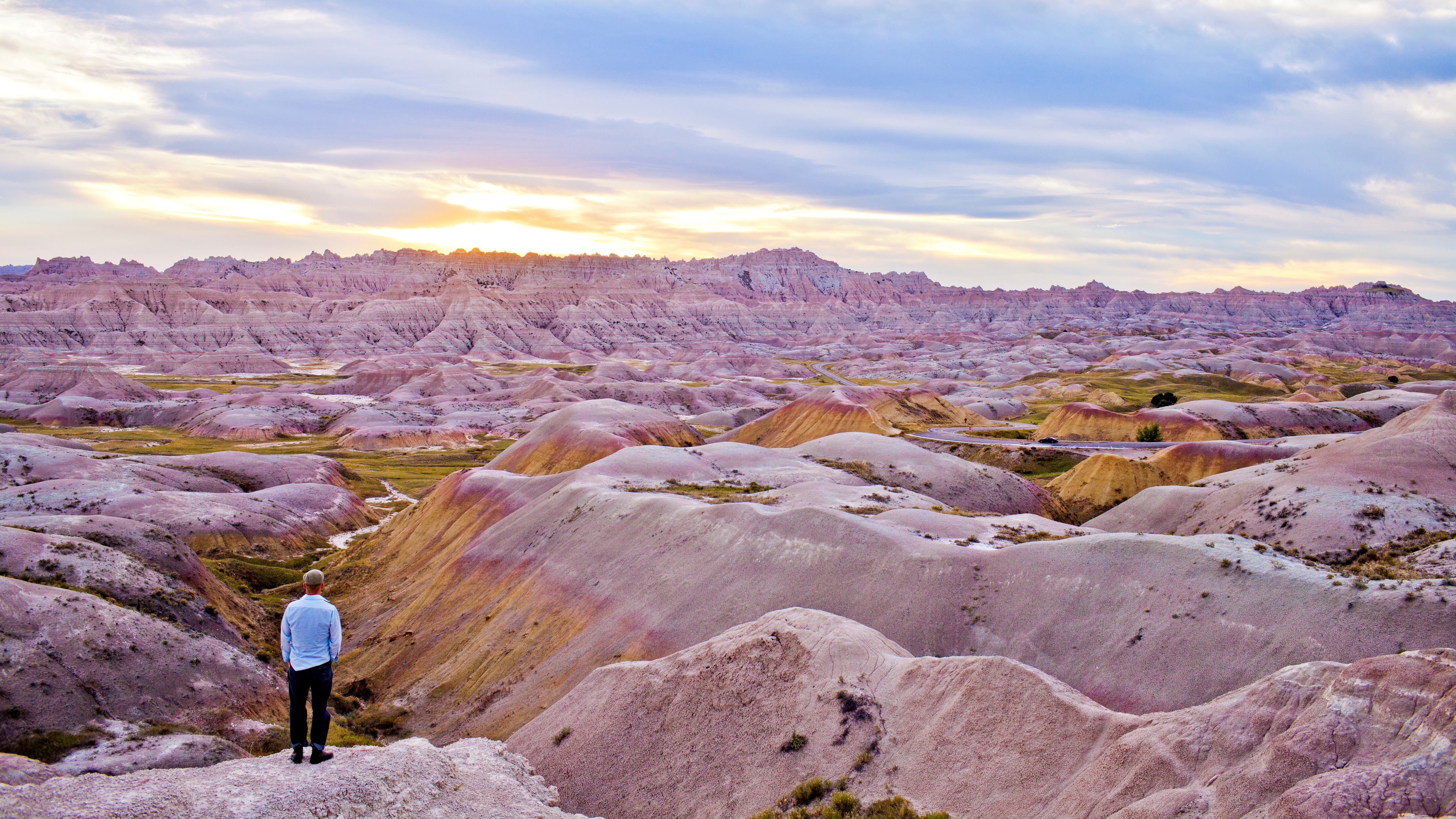
We’ve covered a lot of the incredible National Parks out west, from Colorado to California, and even written a roundup of the best National Parks on the East Coast, so it’s reasonable that some of you have been wondering when we’re going to get round to the best National Parks in the Midwest? The region might not have the deserts and canyons of the west or the coral reefs and ancient mountains of the east, but it’s home to the planet’s largest freshwater lakes and their beautiful shores, cascades and caves, forests and badlands and some of the best sunsets you’ll ever set eyes on. Among the eight National Parks in the region, there are a few standouts that will have you digging out your hiking boots and brushing off your tent for a quiet wilderness adventure.
1. Badlands, South Dakota
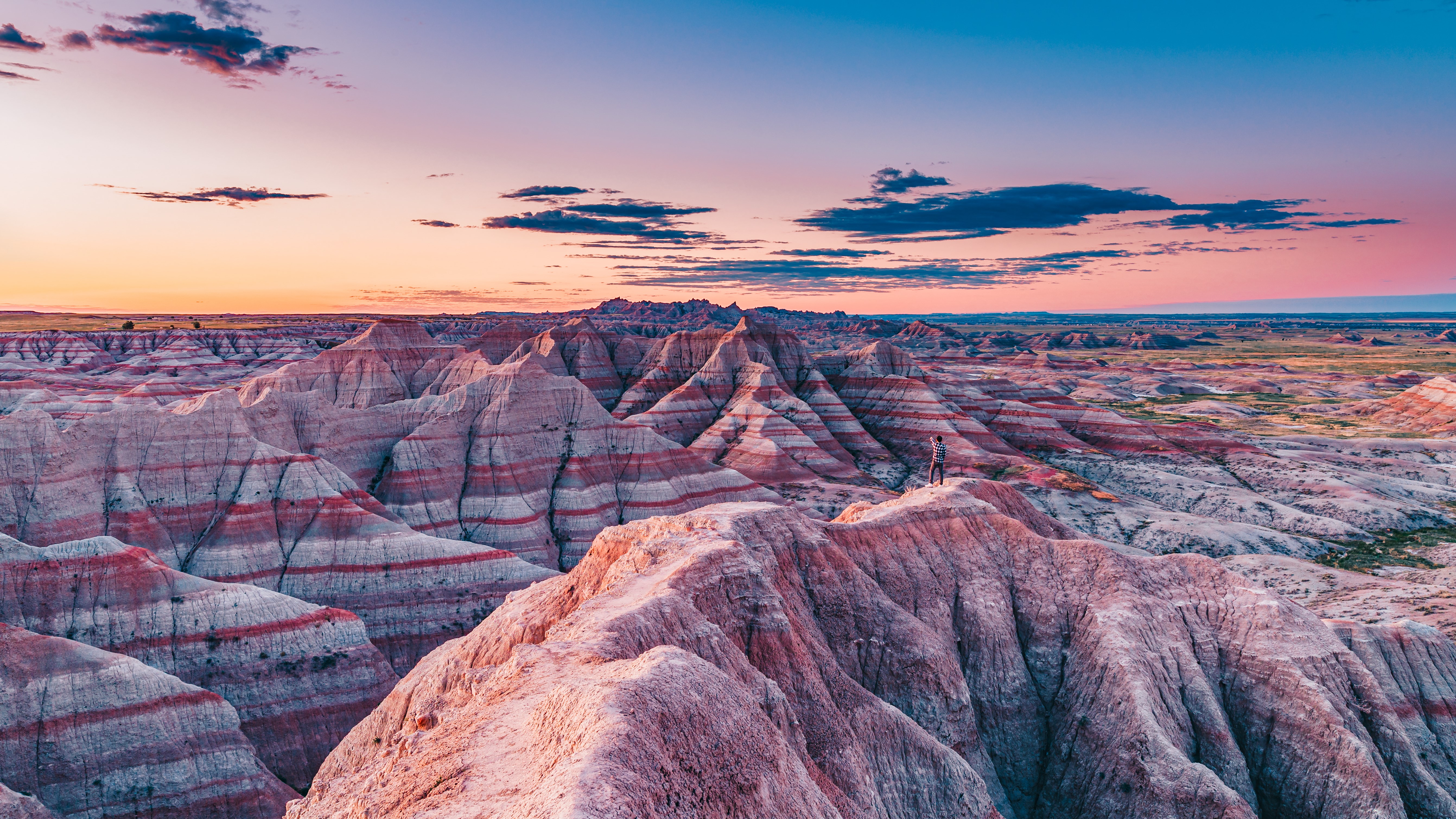
Badlands is well-known for its dramatic landscape, harboring rugged, layered rock formations, steep canyons, towering spires and one of the richest fossil beds in the world within its 244,000 acres. Its remote character is signaled by the diversity of wildlife that lives there and also makes for very dark skies at night. It’s made our list of the best National Parks for stargazing with some 7,500 stars on view each clear night, and you can occasionally even see the Northern Lights here if you’re lucky.
Fun fact: Over 10 millions years, the landscape here has transformed from sea to subtropical forest to open savanna.
2. Isle Royale, Michigan
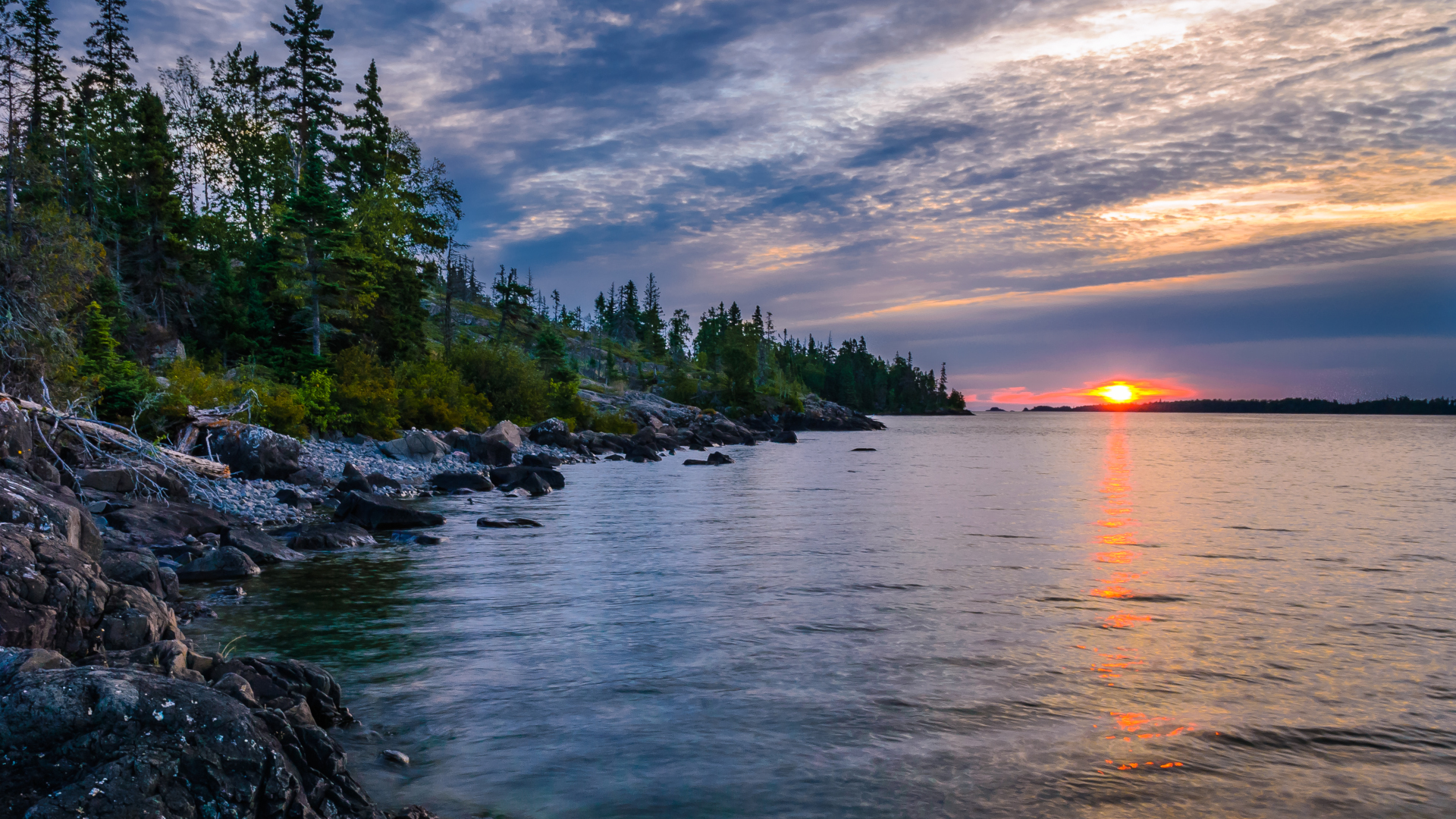
Isle Royale lies in giant Lake Superior and requires a three-hour ferry ride or short seaplane trip from Michigan or Minnesota to reach, so only a tiny 25,000 people each year bother making the trek. However, this rugged island boasts pristine shoreline, caves, swamps, boreal forests, glacial lakes, several small mountains and is chock full of wildlife including moose and, yes, wolves, so make sure you read up on what to do if you encounter a wolf before you go. The island is 45 miles long and 9 miles wide and surrounded by 400 smaller islands. Hiking here ranges from short day hikes to the 40-mile Greenstone Ridge trail which takes backpackers from one side of the island to the other.
Fun fact: Grey wolves have lived on the island since 1948 when it is believed they crossed an ice bridge that formed between Isle Royale and the Canadian mainland.
3. Theodore Roosevelt, North Dakota
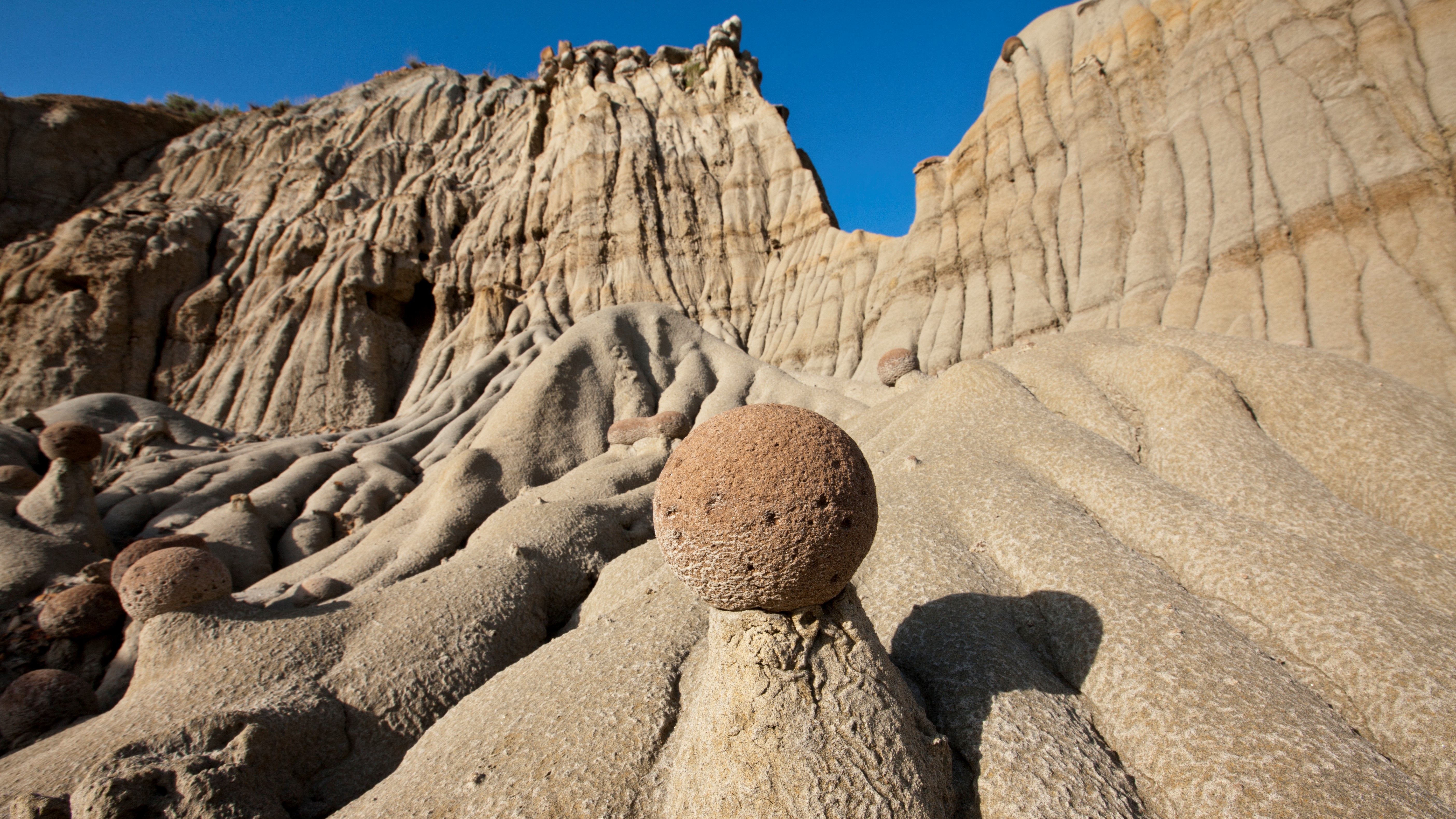
Positioned as it is so close to the west, it may come as no surprise that the landscape of this historic park harkens the dramatic landscape of the better-known Badlands to the north (it sees a little over half the visitors of Badlands despite sharing similar scenery). It protects badlands topography – where water has eroded soft clay soil to create dramatic striped hoodoos and curious cannonball-shaped rock formations – as well as extensive prairie. It is said that President Roosevelt’s time in the area during his twenties impacted him so much that it inspired his conservation approach – during his time in office, he established 50 national forests, 51 federal bird reserves, four national game preserves, five national parks and 18 national monuments on over 230 million acres of public land.
Fun fact: Theodore Roosevelt is home to the third largest concentration of petrified wood in the world.
Advnture Newsletter
All the latest inspiration, tips and guides to help you plan your next Advnture!
4. Voyageurs, Minnesota
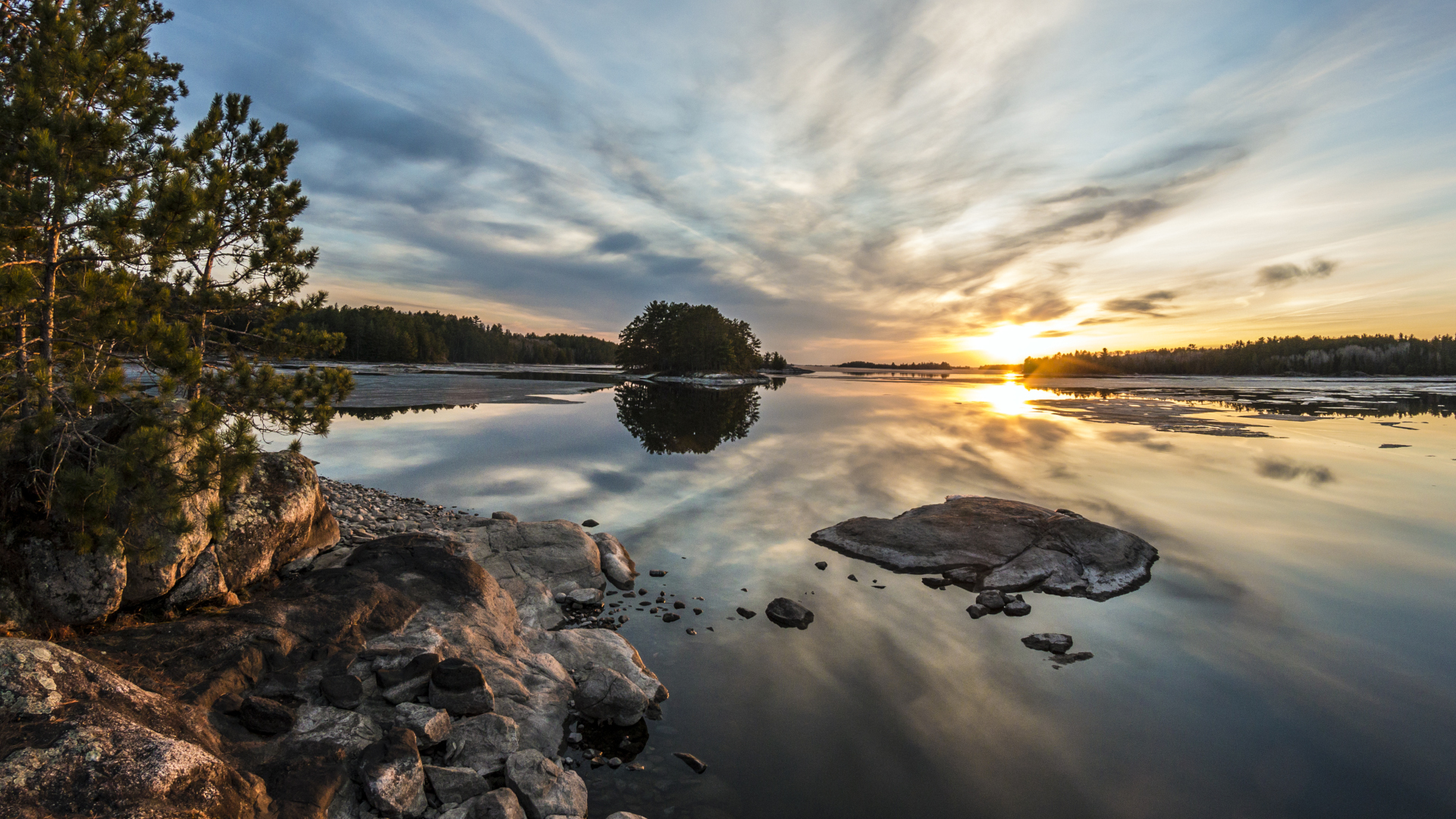
Voyageurs protects four large tranquil takes up in northern Minnesota near the Canadian border and while it’s most popular for water sports, its hiking trails range from five day backcountry thru-hikes to short day strolls where you can admire tall bluffs, rocky ridges and wetlands. Though it’s named for the French fur traders who settled here, the area has been inhabited by native Americans for millenia, most recently the Ojibwe. Depending on the time of year, you’ll need a boat, kayak, pair of cross country skis or snowmobile to reach most of it. Make sure to bring some good insect repellent in the summer because mosquitos love this watery terrain!
Fun fact: Within the park’s boundaries lie over 30 lakes and more than 900 islands.
5. Cuyahoga Valley, Ohio

Sandwiched between the urban centers of Cleveland and Akron, you might well be surprised to discover the natural oasis protected within the limits of Cuyahoga, which may not provide the grandeur of popular parks like Yosemite and Yellowstone, but offers rocky outcrops, dense forests, rolling hills and scenic waterfalls. There are 125 miles of hiking trails here such as the Brandywine Gorge Trail where you can enjoy beautiful fall colors, or the Ohio and Erie Canal Towpath Trail which follows the route where mules once pulled the canal boats along.
Fun fact: Cuyahoga is one of the few National Parks that is free to enter.
6. Wind Cave, South Dakota
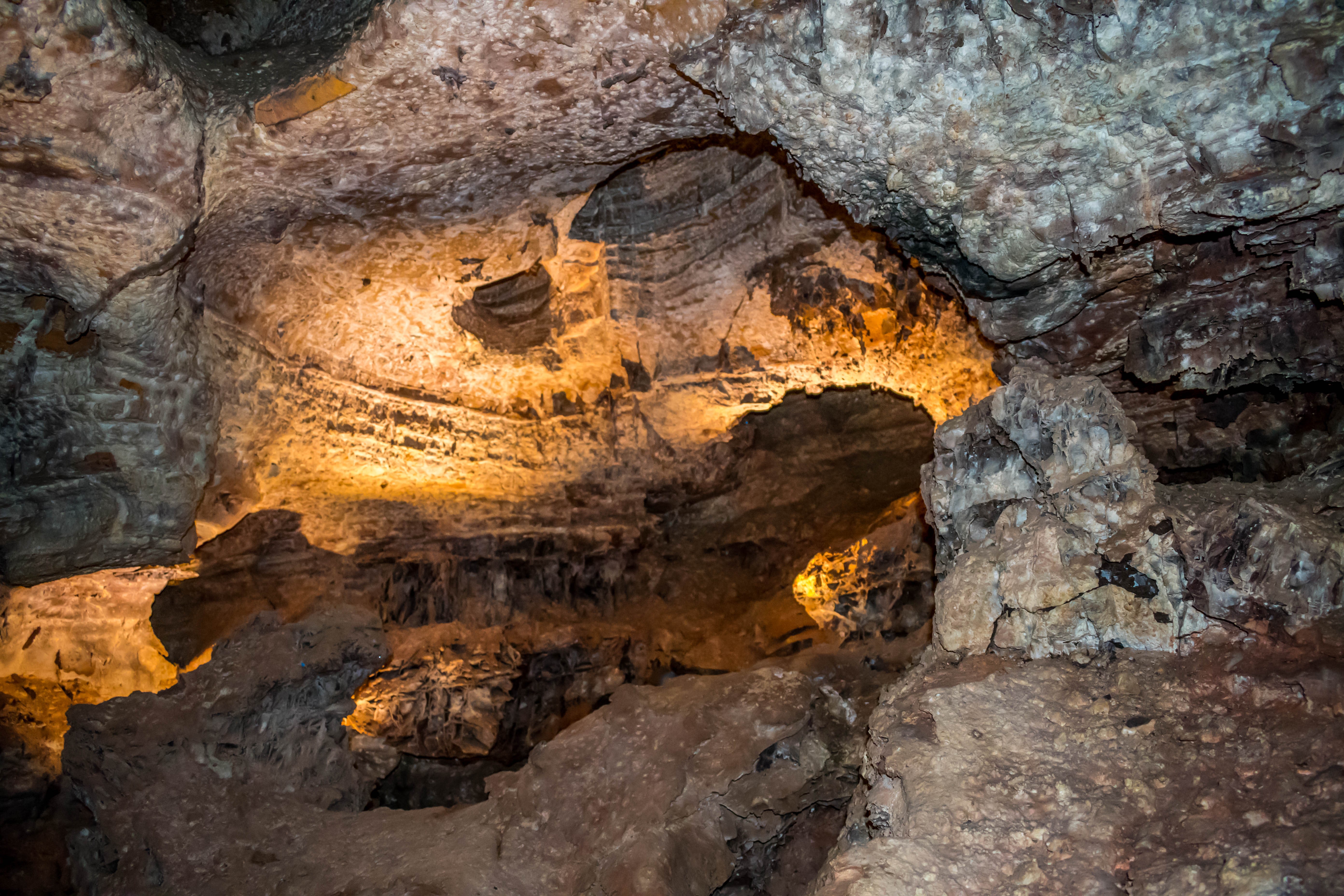
Above ground, this National Park protects the largest remaining natural mixed-grass prairie in the country and the bison that graze on it, but most visit this park to discover its underground secrets. With 154 miles of explored passages, Wind Cave is the the third-longest cave in the US and the seventh-longest in the entire world. The cave is known for its extensive calcite formations, in particular honeycomb-like boxwork formations, and is so-named because the passage of air within the caves makes it feel as though it is breathing. You can only explore the cave in a ranger-guided tour and advance bookings are recommended.
Fun fact: Wind Cave was the seventh National Park to be established and the first cave to be designated a National Park anywhere in the world.
Julia Clarke is a staff writer for Advnture.com and the author of the book Restorative Yoga for Beginners. She loves to explore mountains on foot, bike, skis and belay and then recover on the the yoga mat. Julia graduated with a degree in journalism in 2004 and spent eight years working as a radio presenter in Kansas City, Vermont, Boston and New York City before discovering the joys of the Rocky Mountains. She then detoured west to Colorado and enjoyed 11 years teaching yoga in Vail before returning to her hometown of Glasgow, Scotland in 2020 to focus on family and writing.

